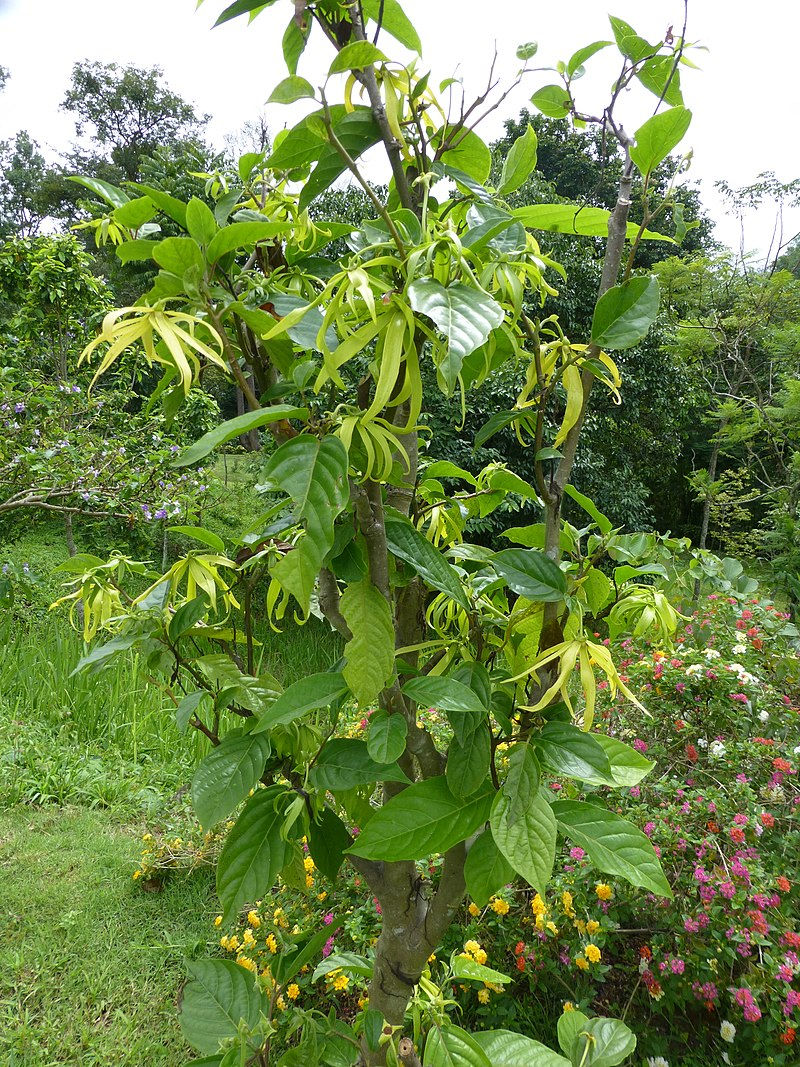
The Ylang Ylang flower... Does it grow in Africa ?
It is not a flower native to the Ivory Coast, but we had it in our garden! In Ivory Coast, everything grows so well! And I can tell you that its captivating scent rocked my childhood! A scent of white flowers, halfway between jasmine, narcissus and tuberose... 🌺 We played apprentice perfumers, with my sister! And we spent hours grinding the flowers, mixing them with water to try to make a perfume! Not always intoxicating!!! 🤣
What is this Ylang Ylang flower ?

Prized by perfumers for its intoxicating and powerful scent, ylang-ylang, also called Cananga odorata, is a plant native to Southeast Asia, notably Indonesia, Malaysia and the Philippines. It also grows in warm and humid tropical regions of the Indian Ocean islands such as Reunion, Mauritius and Madagascar; in the Caribbean, in Pacific islands like Hawaii and in Thailand.
Discovery of Ylang Ylang, whose name means "flower of flowers", in the language of the Philippines

The ylang-ylang flower grows on trees up to 25 meters high. To make picking easier, they are pruned so as not to exceed two to three meters. Their regular pruning allows the plant to produce more flowers. Its flowering extends throughout the year, but is particularly abundant during the rainy season, from December to April, which is hotter and humid. The flowers are first green, then yellow and very fragrant. They consist of six petals in drooping strips and grow on branches in twigs. The base turns red once the flower reaches maturity.
How is Ylang Ylang flower used ?

It is made into essential oil, for cosmetics or perfumery. Ylang Ylang essential oil also has calming and relaxing properties. - In infusion, it is relaxing - In atmospheric diffusion, its stimulating fragrance invites you to travel. - Diluted in a Vegetable Oil, it strengthens brittle nails and split ends of hair. Used on the skin, it is known for its aphrodisiac properties. On the same day of harvest, the flower is distilled by steam for up to 24 hours. We then obtain two phases. Since oil is lighter than water, it stays on the surface. This process allows the essential oil to be extracted. 100 kilos of flowers are necessary to create approximately 2 liters of essential oil !!!
Did you know ?
Chanel No. 5 (one of my favorite perfumes !) contains a lot of ylang ylang, maybe 10%, explains Christopher Sheldrake, perfumer and research and development director at Chanel. In 1921, when Ernest Beaux created No. 5, Gabrielle Chanel asked him for a perfume "that smelled like a woman", not roses or lily of the valley.
Did you know this flower ?
If so, where did you discover it ? I'm curious to know !
Don’t hesitate to leave a comment !
If you want to discover more about the nature in Africa, it's here :
And if you just want to discover the rest of my blog, it's here :

Comments